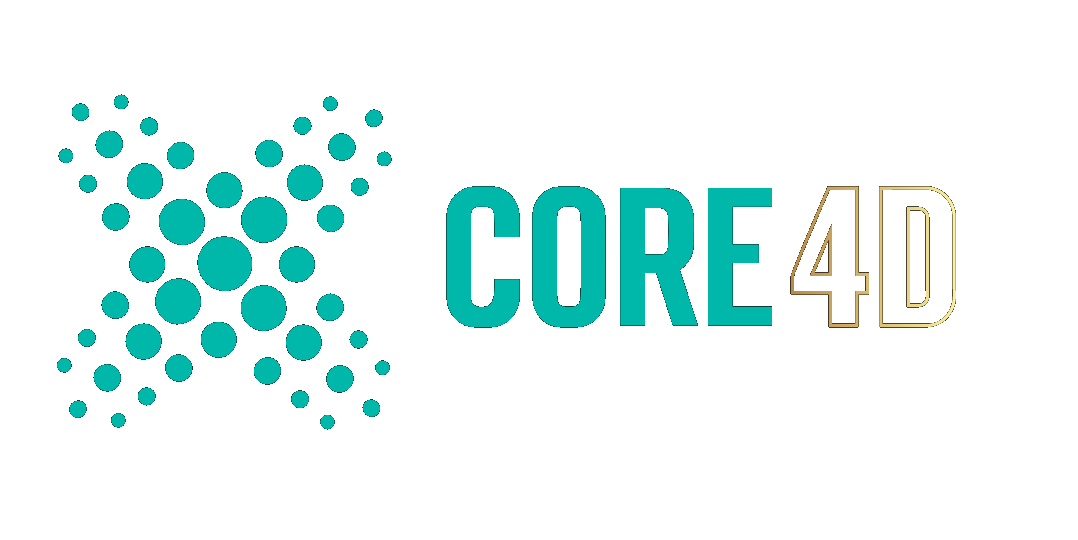-
Posts
593 -
Joined
-
Last visited
-
Days Won
19
Content Type
Profiles
Blogs
Forums
Gallery
Pipeline Tools
3D Wiki
Plugin List
Store
Downloads
Everything posted by hvanderwegen
-
Definitely. It is much improved in 2.8 and 2.9, but the outliner in C4D is still much more usable. I think you are talking about light groups? Base Cycles in the regular Blender doesn't offer that (yet?), but eCycles has that option. This is already possible. Hold down the ALT/OPTION key to change parameters for multiple selected objects simultaneously. Also works for animation. One thing Cinema4D has improved on in the latest 2 versions is pure raw mesh editing performance, which is ~2-3 times faster than Blender. And the subd modifier performance while animating is pretty dire. The B devs need to tackle that as well. And obviously C4D still has an overall better user experience. Having said that, it is still pretty impressive and an excellent choice for beginners and users with a low budget. Each release brings interesting new improvements, but I do hope they will slow down a bit with all the new major features and focus a bit more on improving some of the foundations. Finally in this latest version is it possible to click on an outliner tag (such as a modifier tag) and it will then display the modifier settings. Something so simple that C4d users had from the very start, is now possible in B! Well, better late than never... I am glad the B devs have understood the importance of these little UX improvements.
-
2.92 released today. https://www.blender.org/download/releases/2-92/
-
I would say 'many' or perhaps 'most' professionals, rather than 'every'. I know plenty of archviz people who earn their living with alternative 3d apps.
-

Synthetik, game crafted with Cinema4D - free license give away (DONE)
hvanderwegen replied to dast's topic in Buy | Sell
Thank you! I will report back how the game plays. -

Synthetik, game crafted with Cinema4D - free license give away (DONE)
hvanderwegen replied to dast's topic in Buy | Sell
333 -
And another classic:
-
I almost never purchase AAA games at release time. I wait at least a year or 18 months, or so, when all the major bugs have been squashed and I can get it at 30% of the official price (or lower), all DLCs become available in special "ultimate edition" deals, and the community/developers have had time to improve the base game. And I play games on all platforms throughout game history through emulation. Yesterday I played through Cesar the Cat on the C64 in one short sitting - what accomplishment! 😜 Although I did get AC:Valhalla for free with my new 3900 CPU - but still waiting to get my hands on either a 3080 or 3090 before I am going to play it. And wait a couple of months for the major bugs to be squashed, of course. No haste. It generally is a good idea to stay away from the hype surrounding new games. I am patient and it gets me the best game experience at the lowest price ☺️
-
AMD ProRender 3 released today for Blender. The major change is support for hardware-accelerated ray tracing on AMD’s Radeon RX 6000 Series GPUs: something previously only available on Nvidia RTX GPUs in the native Cycles renderer. http://www.cgchannel.com/2020/11/amd-ships-radeon-prorender-3-0-for-blender/
-
A new point release is installed alongside the older versions. So if you have 2.90 installed, 2.91 will be installed as a new version, and the older version is still available. To transfer existing preferences and add-ons, do this: https://twominutetuts.com/tutorial/transferring-settings/ And a free addon is available from the Blender Cloud to synchronize settings and preferences across multiple machines. https://cloud.blender.org/services
-
Blender 2.91 released today! The new sculpting tools are pretty cool. https://www.blender.org/download/releases/2-91/
-
Exciting news! Redshift is the latest in a growing list of "industry-standard" renderers to join the roster of render engines with official blender support. Its latest 3.0.33 release brings with it the first public beta release of its long-awaited Blender plugin among a host of new features. While the current implementation is still not feature-complete, with it still lacking light-linking and motion blur among other things, development is still ongoing to bring the Blender addon to feature-parity. Source: https://www.blendernation.com/2020/11/20/redshift-plugin-for-blender-released/#prettyPhoto
- 1 reply
-
2
-
Install Flexi Bezier and W_Mesh. Parametric live objects and improved curve drawing tools comparable to other design apps.
-
There are various addons which do add non-destructive parametric objects to Blender. For example this free addon : https://github.com/WiresoulStudio/W_Mesh_28x Other addons such as Modular tree and Sorcar allow for nodal non-destructive modeling. But I do agree it would be nice if this would be standard in Blender. And I agree that C4D's interface feels arguably the most natural to the average user - in particular those designers with Adobe experience.
-
See https://installer.MAXON.net/general/eula/202008/MAXON_EULA_EN.pdf So any money-making is prohibited.
-
Wow, did not know about that upcoming improvement. I will download the 2.92 alpha today, and check that out.
-
To be fair, it is already (almost) as simple to parent objects via the outliner in Blender. Hold down shift and drag object on other object, and voila: parented. The outliner is receiving a lot of love lately. R2.91 will be introducing dragging and dropping of modifiers and constraints. I have a feeling the developers are inspired by Cinema4d's outliner. Materials can be dragged and dropped as well at this point. What was once an almost pointless addition to Blender, has evolved into something that I use on a daily basis. I love Cinema4D's outliner, and Blender's outliner is much closer in functionality now then ever before. Although it would be nice to see an option to switch to horizontal stacking of tags like in C4D.
-
Blender's usability has pretty much normalized since its 2.8 release, and is steadily improving. Not as good as C4D yet, of course, but then again each 3d app has its idiosyncrasies. The current version of B is light years ahead of the versions you tried. And no more right clicking to select stuff 🙂 There is a reason why it's become so popular since 2.8. Anyway, if you can afford it C4D is pretty much the easiest to learn 3d app. But C4D is an expensive hobby indeed.
-
Carrara! I remember Carrara. I think I recall 3D World Magazine featuring a free version on their cover ages ago... 🙂 If I understand correctly, you are looking for 3d software that allows you to a) import DAZ characters and content b) Stage things, with lighting, objects, camera(s), etc. c) render quickly with almost no waiting times involved, with good hair and cloth simulation d) be very affordable, preferably a perpetual license(?) You either pay the monthly rent ($94 per month) or the full rent up-front per year ($720). It is impossible to miss a payment in the annual rent, since the $720 is prepaid. If you stop paying the monthly $94 rent, you lose access to Cinema4d. If you do not renew the $720 annual rent, you lose access to Cinema4d. Alternatively you could purchase the perpetual license which costs $3495, and will not expire. Cinema4D's built-in render engine is somewhat slow. It depends on the complexity of the scene, of course. It is a CPU-based render engine, and speed is mainly dependent on your computer's CPU. Many Cinema4D users choose to render with an alternate renderer, e.g. Redshift (increases the monthly price to $82 / $116), or Octane (rent for $30 a month or $300 a year). Other render engines are also available at extra cost. Cloth tools are quite good, as is the hair. You will have to replace the hair meshes in your Daz characters with "real" hair, if you need this. It is also possible to assign physics sims to pony tails, and such. Daz provides a free Daz-->C4D bridge to import DAZ assets. https://www.daz3d.com/daz-to-cinema-4d-bridge Alternatively, I use Reallillusion Character Creator to import DAZ characters, and export to FBX - which allows for importing the characters and assets to almost any 3d app and retains the materials (which still need some fine-tuning, of course.) But these characters (and DAZ imported characters via the Daz bridges) never are imported with "real" hair - only polygonal hair, and no cloth physics. If you want this, you must fix this manually after import. It doesn't matter what 3D app is used: C4D, Blender, Max, etc. If money is an issue, have you looked at Blender? Free, and Daz provides the same bridge for free for Blender users. https://www.daz3d.com/daz-to-blender-bridge Blender's Eevee render engine renders pretty much real-time. (Almost) no waiting times involved, generally. I find it excellent for staging in real-time - pretty much get what you see. Nice hair tools to add hair to your characters. Assign cloth sims to existing cloth geometry. As stated before: you will have to replace the hair meshes in your Daz characters with "real" hair, if you need this. It is also possible to assign physics sims to existing hair geometry like pony tails, and such. Another possible option for you is iClone 7, which is meant for quick staging and animation of scenes built out of premade assets, and supports import of DAZ characters and assets. The free versions are quite limited, and you will need the 3DXxhange pipeline integration to import and convert DAZ assets. $599 will get you this. If you want to change the characters: costs $990. Be careful with Reallusion - loads of promises, and while I really enjoy Character Creator they know how to milk their products and customers. Similar to DAZ, of course. Before you lay down the cash, download all the trials, and give them a whirl. Blender is free, of course. Or just stick with DAZ Studio, and stage there. Also free, right?
-
I would name Lightwave here - which is far more destructive in workflow than any other current DCC.
-
They did booleans the hard way in Blender - much easier and faster when BoolTool is activated: Select one object, select the next, CTRL numpad minus. Done. And it hides the cutter object's geometry and replaces it with a wired box. Anyway, interesting video. It really shows how incredibly spoiled we are with the current crop of 3d apps compared to Tron times...
-
One thing Max has going for it is the sheer brutal performance of its viewport. Great for archviz in this regard. My own experience with Max: It's the 3d software I learned after leaving the Amiga platform behind. From Sculpt/Animate 3d, to Imagine, then C4D (Amiga), Lightwave (Amiga), switch to PC and Max, followed by C4d again, Lightwave, a bit of Max, a very short stint in Softimage, some Modo, then Blender. At work it's a mix of Blender and C4D (with some Modo). I actually quite liked Max at the time. The current release still has that somewhat clunky feel to it (tried it last year). It is no longer my cup of tea, but a good workhorse. The GUI is indeed no comparison to the likes of C4d. Nor to Blender, in my opinion.
-
Ah, IT Crowd...
-
I have seen alternative cooling solutions from vendors here and there. According to Linus the ram and cpu temps are pretty much the same as running a 2080ti card with the official card.
-
A worthy upgrade from my GTX1080 - if I can get my hands on one. I will await the 3090 results.
-
I like the new Sketchup-like extrude. All new features in 5 minutes: https://www.blender.org/download/releases/2-90/

